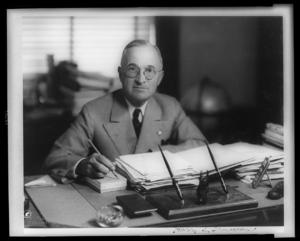 Once the A-bomb was tested and worked, whether civilians or the military would control it became an issue. Thanks to Truman, it remained under civilian control.
Once the A-bomb was tested and worked, whether civilians or the military would control it became an issue. Thanks to Truman, it remained under civilian control.
Today, the Department of Energy, not the military, is the custodian of America’s nuclear weapons.
Everyone knows Truman ordered the Hiroshima bombing, but there’s no evidence he authorized the second bombing.
“The Nagasaki order passed between generals” who took Truman’s approval of the Hiroshima mission as “a blank check sort of order,” historians say. And “Truman seemed surprised when it took place,” one historical researcher found.
“The decision to use the second bomb … was made by military people,” he says. “Not with any consultation with Truman at all.” When Truman was informed Nagasaki had been bombed, he “put a halt to further bombing … [and] basically said you can’t use atomic bombs without my explicit permission. You cannot just keep dropping them as soon as they’re available.” Read story here.
Since then, only presidents have had authority to release nuclear weapons for the military’s use. That’s highly significant because anyone who’s studied subsequent crises can make educated guesses about what would’ve happened if the military had controlled the nukes.
It’s enough to tell you that for several decades the Pentagon’s philosophy was “use or lose,” and SIOPs in effect at the time called for firing off all of our arsenal at the first shot, which involved planting 3 or 4 hydrogen bombs on each of 4,000 targets in Russia and China even if we weren’t at war with China. And most of our generals thought a conflict with the Soviet Union would immediately go nuclear (click here for source).
Truman did not need to issue any further orders to bomb any other targets. The order for Hiroshima clearly states the three other targets in the order would be bombed as weapons were available or Japan surrendered. In addition in a speech after Hiroshima was bombed he bluntly told the Japanese there would be further use of atomic bombs if they did not surrender.